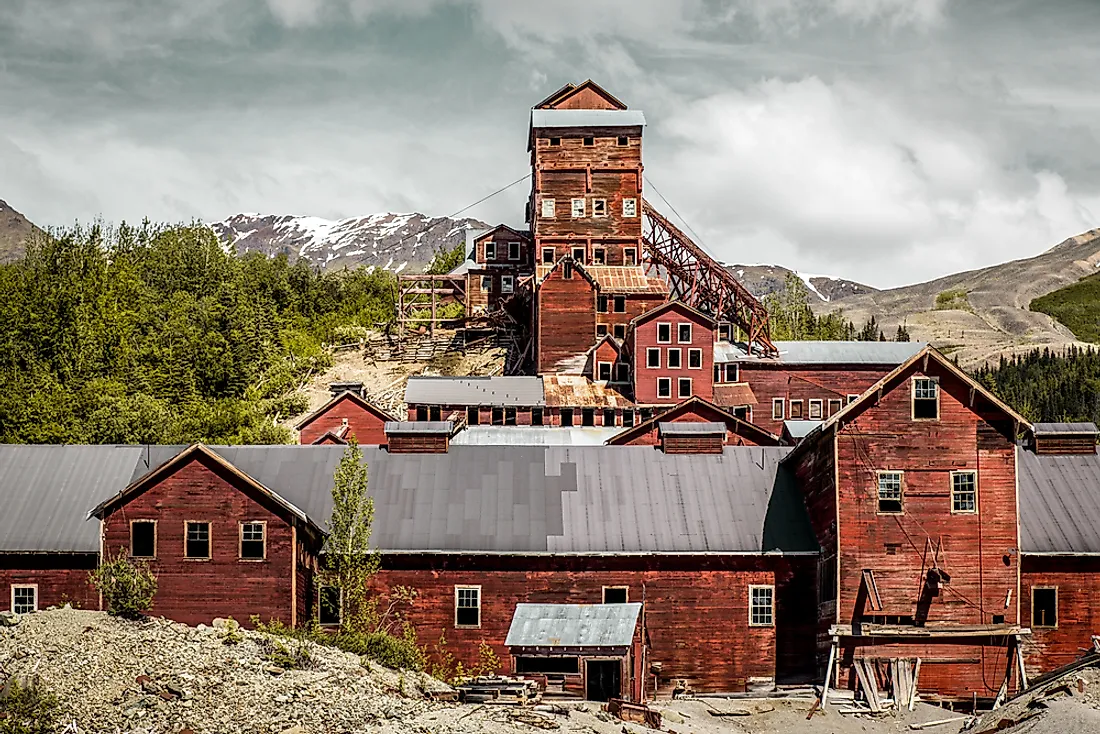Ghost Towns of America: Kennecott, Alaska

Kennecott was a booming copper mining site located in the Valdez-Cardova Census Area in Alaska, in the US. It is situated beside the Kennecott glacier, northeast of the Valdez, and forms part of the St Elias National Park and Preserve. Kennecott was an important area for copper miners in the early 1900s. The area that encompassed the camps and mines is now a National Historic Landmark.
The Rise of Copper Mines in Kennecott
In the summer of 1900, a group of prospectors discovered malachite in Kennecott. A few days later, chalcocite was also discovered in the same location. With the financial support from the Havemeyer Family, Stephen Birch looked for mining sites in Alaska. Birch spent the summers of 1901 to 1902 making profits for development of Kennecott. Havemeyer, Ralph, and Schultz became the owners of Alaska Copper and Coal Company. During the summer of 1901, Birch revisited the company to sample and verify the quantity of copper in the mines. He discovered that Bonanza mine had the largest amount of copper in the world at the time. In 1906, Birch acquired $30 million from Alaska Syndicate, a capital that was used to construct a railway line, purchase a steamship, and develop the mines. In 1911, copper was first transported by the railway line. 1916 was the climax of copper production. Kennecott copper mines included Bonanza, Jumbo, Mother Lode, Erie, and Glacier. Glacier functioned during the summer only. Many workers moved to the town to work in the mines and to conduct other business activities. During the approximately 27 years of operation, copper mining in Kennecott generated revenue of over $100 million.
Decline of Copper Mining in Kennecott
In 1925, Kennecott's geologist predicted a depletion of copper in the mines. By 1930s, most of the copper mines were exhausted. The Glacier Mine was shut down in 1929 while the Mother Lode was officially closed in July 1938. The other three mines were closed in September 1938. Workers and inhabitants left the town to search for opportunities elsewhere. The last train left the town on November 10, 1938 with only a family of three that had been serving as the town's security. Most of the workers left their belongings behind. The town was virtually a ghost town, with very few inhabitants.
Tourism in Kennecott Today
Kennecott has become a popular tourist destination, especially after the 1980s. Most tourists visit Kennecott to tour the ancient copper mines and buildings. St Elias National Park and Reserve and the Wrangell Mountain Ranges also attract tourist to Kennecott. The area was designated a National Historic Landmark in 1986. The land within the Kennecott Mill Town was acquired by the National Park Service in 1998, which is now renovating the mill and several town buildings. Most of the buildings need renovation since they have been abandoned for over sixty years. Some of the buildings and structures are still under private ownership.
Popular activities for tourists visiting the ghost town include glacier hiking and touring the abandoned mill. Tourists can also hike the Bonanza, Jumbo, and Erie mines. Erie Mines face the Stairway Icefall, giving tourists a clear view of the stunning icefall.











